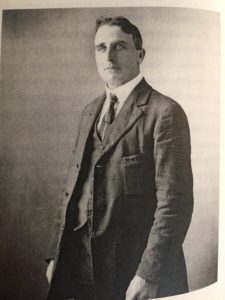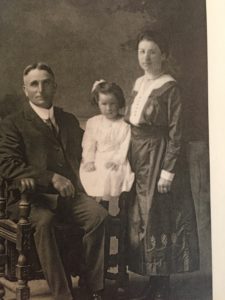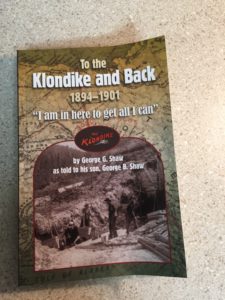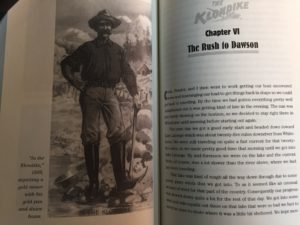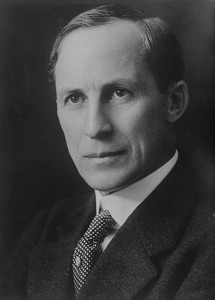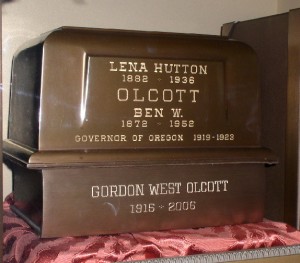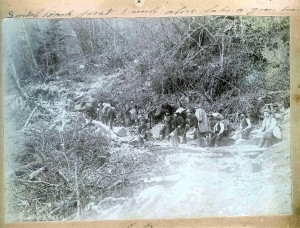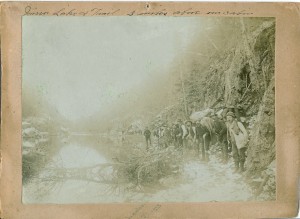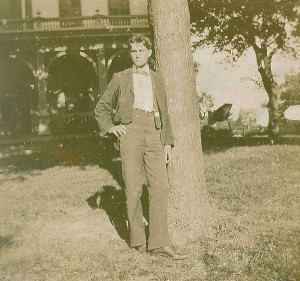
I recently received some original photos of Mr. O’Leary’s cabin and compadres on the trail. It is near Mirror Lake, which I don’t immediately have access to the exact location. I will post these here along with a photo of Mr. Arthur O’Leary in 1898 as he prepared to come to the Klondike. He was only 24 years old and full of the Irish heritage of adventure and hard work – don’t I know about that from my own family!
Anyway, here is his story as told by his great grand-daughter, Jeanie Decker:
After their father’s death in 1897, Arthur O’Leary (born 1874 in Illinois) and his younger brother Richard (born 1876) were the only remaining members of their family. While Richard was attending Knox College, Arthur headed west. In 1898, Arthur went to Alaska. According to his obituary in an Illinois paper, “With Ben. W. Alcott, lately governor of Oregon, and also a hometown boy, he went into the Klondike and with two other men built the first cabin on the Yukon, being on the inside, when the Gold rush occurred in 1898.”
Arthur returned from Alaska in Aug, 1899. Arthur returned to Illinois and then, with his fiance Frances Cornell and his brother Richard, left Illinois and moved to Denver, where Arthur and Frances were married in 1900. Arthur and Richard mined in Colorado for a several years. By 1910, Arthur and Richard had moved on to the La Cienega Mine in Mexico, while Frances and her daughter roomed in El Paso. I don’t know if Arthur got caught up in the Mexican Revolution, but he sent his daughter a postcard of the troops entering Juarez with a cryptic message: “This picture was made possible by about 50 Americans but am afraid next time they will be against rather than with them as I think some time in the near future there will be trouble from another source.” (Odd thing to write to a 6 year old!)
By 1920, Arthur, Frances, and their daughter had moved to Placerville in California, where he would mine for the rest of his life. (Richard would remain in El Paso, mining in the south, until his death in 1952.) I still have two of Arthur’s mining claims from El Dorado County. Arthur died in Placerville in 1932 of a heart attack. His obituary included: “Mr. O’Leary has been active in the mining industry, from Alaska to New Mexico. At the time of his death interested in a number of mining properties including the one he was working on at the time of his death. During his long residence in El Dorado county he had attained a position of unique province among members of his chosen profession and in other lines of endeavor by his cheerful dispositon and stong character.”
The “Ben W. Alcott” mentioned is Ben W. Olcott, who was also from Keithsburg IL and became governor of Oregon in 1911. “


